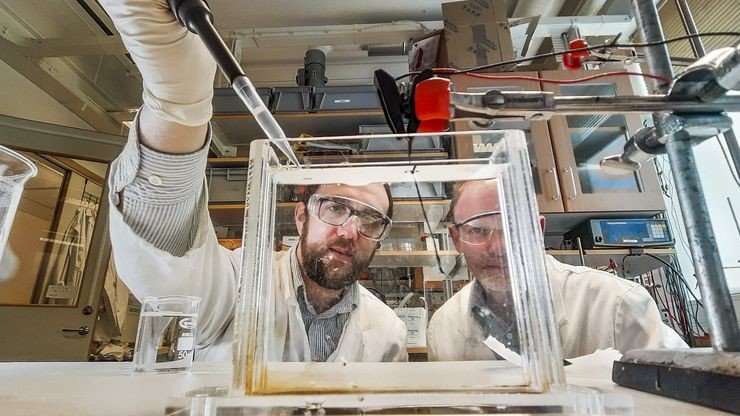Scientists create artificial muscle that functions like the real thing
Scientists have created an artificial muscle made of polymer that uses glucose and oxygen to function just like a human muscle, in an exciting find that could change the future of prosthetics and microrobotics.
The team from Linköping University in Sweden used a material made of polypyrrole, an organic compound with high electroconductive properties, to make the artificial muscle. The volume of the polymer compound can be altered when subjected to an electrical current.
Also on rt.com World’s 1st 3D-printed heart with ‘cells, blood vessels’ unveiled in Israel (PHOTOS)The researchers designed their ‘muscle’ using two layers of polymer with a thin membrane in between. They then applied an electrical charge to one side of the polymer, which causes the ions in it to be expelled across the membrane and shrinks the sheet, while the sheet on the other side absorbs the electrons and expands, making it bend like a real muscle.

Scientists say that the charge used on the artificial muscle can be achieved from glucose and oxygen once the polymer is covered in enzymes.
“No source of voltage is required: it’s enough simply to immerse the actuator into a solution of glucose and water,” study lead Edwin Jager said.
Also on rt.com It’s in your blood: New Alzheimer’s test lets doctors detect dementia in ‘under 1 hour’This would make the artificial muscle operate in a very similar way to human muscles, and could in the future be used to replace damaged muscles instead of fitting a prosthetic limb. It could also be used to power micro-robots, which could use energy from substances in their natural environment, like “autonomous micro-robots for environmental monitoring in lakes,” Jager said.
The next step is for researchers to see if the reaction can be repeated in cycles, like human muscle movements.
Like this story? Share it with a friend!














